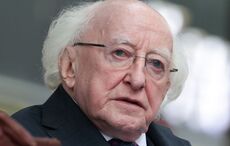Vodafone teams up with ASSERT at UCC to deliver 5G connected telemedicine
After much hype, high-speed mobile connectivity arrived in Ireland this week with the launch of 5G by Vodafone.
Live across locations in Cork, Limerick, Dublin, Galway, and Waterford, Vodafone will expand the network to further locations in Ireland over the coming months.
The arrival of 5G technology in Ireland has also brought with it a first in the medical field, with Vodafone announcing a strategic partnership with the ASSERT Centre (Application of the Science of Simulation to Education, Research and Medical Technology) in University College Cork (UCC).
This partnership will make the Center the first 5G connected telemedicine and medical robotics training center in the world.
Read More: Ronan Dunne on connectivity driving the future and need for inclusion
The ASSERT Centre at UCC enables clinicians, industry, and academics across a broad spectrum of healthcare research, to design, develop, deploy and trial innovative and disruptive healthcare solutions, in a simulated healthcare environment that deliver real-world solutions for healthcare problems in the developed and developing world.
Speaking at the 5G launch event, CEO of Vodafone Ireland Anne O’Leary said: “5G is set to revolutionize how we use and adopt technology and will have a huge impact on businesses and society in Ireland. It will bring high speed, ultra-low latency, and highly secure connectivity to a massive amount of devices; and is a technology that will unlock a vast array of new use cases through Vodafone’s next-generation network.”
Read More: An Irish man has developed early detection technology for prostate cancer
Director of ASSERT at University College Cork, Professor Barry O’Reilly also welcomed the partnership with Vodafone.
“5G will revolutionize medicine with rapid connectivity of the Internet of Medical Things (IoMT). From advanced wearable technologies that will facilitate the care of patients at home to immediate connectivity of new diagnostic technologies like handheld smartphone-connected ultrasound between point of care and hospital specialists at for example a road traffic accident and an emergency department, to remote robotic surgery.”




Comments